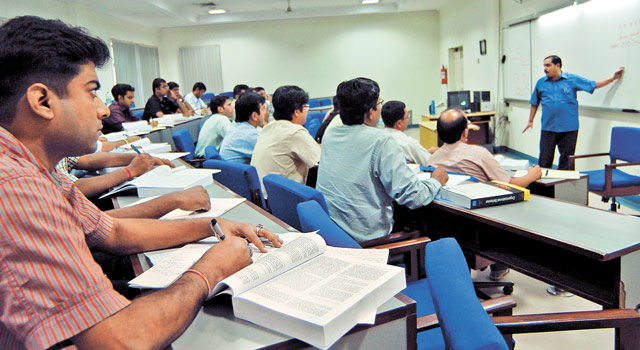Category Jumplist
Jumplist
- Economy
- Education And Career
- Companies & Markets
- Gadgets & Technology
- After Hours
- Healthcare
- Banking & Finance
- Entrepreneurship
- Energy & Infra
- Case Study
- Video
- More
- Sustainability
- Web Exclusive
- Opinion
- Luxury
- Legal
- Property Review
- Cloud
- Blockchain
- Workplace
- Collaboration
- Developer
- Digital India
- Infrastructure
- Work Life Balance
- Test category by sumit
- Sports
- National
- World
- Entertainment
- Lifestyle
- Science
- Health
- Tech
BW Businessworld

Can Modi Do For Teaching What Narasimha Rao Did For IT Industry?
Photo Credit :

05
June, 2015
by
Nandini Sanyal
Print this article
Font size -16+
December 25th2014, I heard our Prime Minister Narendra Modi say: “The richest of the rich and the poorest of the poor wants good education for his child. The world today needs good teachers and India, with its immense youth power, can export teachers to the world”.
Export teachers to the world. Did I hear that right? And did I hear that from a politician. Most people possibly ignored this vision, but there was a ring of nostalgia around it for me.
It took me back to 1990, 25 years ago, when I joined a fledgling IT company called Infosys. Infosys was less than 100 people, and maybe a few thousand people made a living off computers those days. In one generation, this industry has grown to revenues of more than $100 billion, employs more than 3 million people and has a 55% Global sourcing share. Cities like Bangalore, Hyderabad and Gurgaon have been built around this proposition.
I see the same potential in this idea mooted by our Prime Minister. To give you a perspective of the size of the market, the World has 900 million students currently in K-12 grades. With a student to teacher ratio of 1:25, this adds up to a global requirement of 36million pre-primary and primary teachers. At an average global wage of 20,000USD pa, teachers earn $720 billion annually. Can India aspire for a 10 per cent of the global market? Can we provide additional employment to 3.6 million Indians (the IT industry hires only 3.1 million people currently) and contribute $72 billion to GDP.
There are 3 reasons why India can quickly become successful as a teaching super power -
Firstly, the teaching industry in India is very mature. India has adopted many novel teaching methods from Montessori to International Baccalaureate. We also have our own home spun schooling systems like CBSE and ICSE systems that have been successful in creating generations of successful students and managers. These systems have tremendous credibility amongst Indians globally and are also gaining traction amongst people of other nationalities. Whereas, the IT industry had no domestic market, and had to build all its skills internationally. This made it significantly difficult for them in the initial years.
Secondly, India is a hot bed of educational innovation. Innovations like Hey Math are being used as a standard in Singapore, while Planet Read’s ground breaking work on same language subtitling to improve literacy skills won Brij Kothari the Schwab Social Entrepreneur of the Year award in 2009. We have companies like EduSports that are pioneering sports education. There are numerous stories of Innovation in education in India that have the potential to change the world. Our innovation maturity is very high.
Thirdly, success of initiatives like TEACH for INDIA demonstrates that young people in India are intrigued by education and looking for careers in primary education. The establishment and success of the Azim Premji University, a university focusing purely on primary education, is another indicator of the trend amongst the young and educated to work in education. Our youth are ready for the teaching revolution.
To make India the Teaching Capital of the world, I have the following recommendations –
- The Government will need to ensure that they do not relegate teacher education to a degree and limit teaching to people who have the degree. The current approach to introduce a 5 year program after 12th or such experiments assumes that people with degrees are the only ones who are capable of teaching. If everybody hired by an IT company needed to have a computer science degree, our growth would have been much slower.
- To ensure quality of teachers, they will need to introduce standard Teacher Eligibility Tests. Performance in TETs should be the criteria for a person to become a teacher. The TETs can be developed on the model of the GATE or the IAS exams with subject specializations being tested for. The TETs should also be fungible across states, just like the AIEEE examinations.
- We need to encourage English language training and adopt a global standard as a measure of quality in English teaching. All teachers teaching in English schools need to be certified in this test.
- The National Skill Development programme of the Government should support organisations that skill people to pass the English tests and the TET exams creating a larger pool of capable teachers in India.
- I believe that implementation of these 4 recommendations earnestly and rapidly am essential to change the teaching landscape, create more competent teachers and enable us to teach the world within a decade.
The author, Umesh Malhotra, is Founder CEO, Hippocampus Learning Centres
